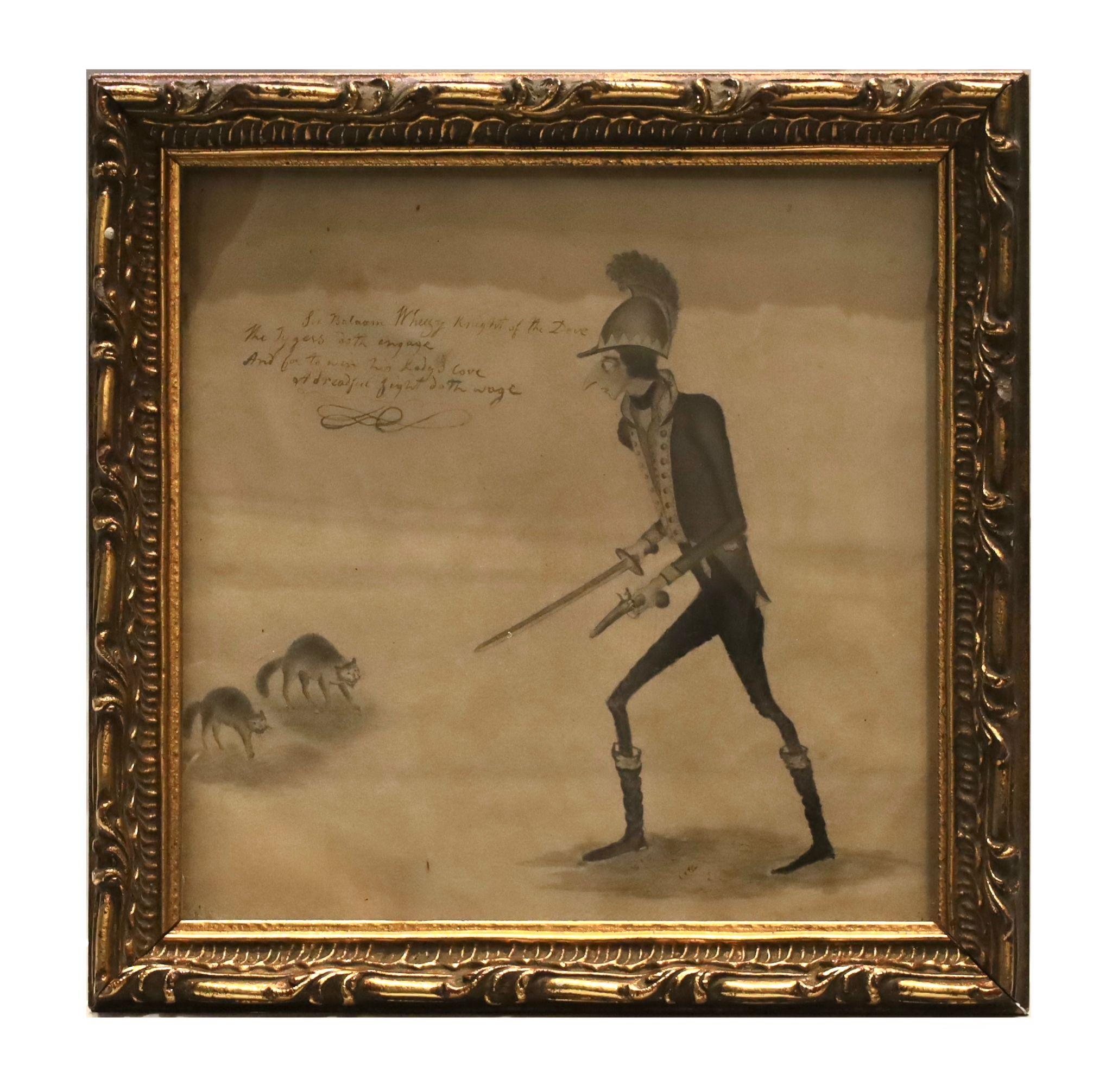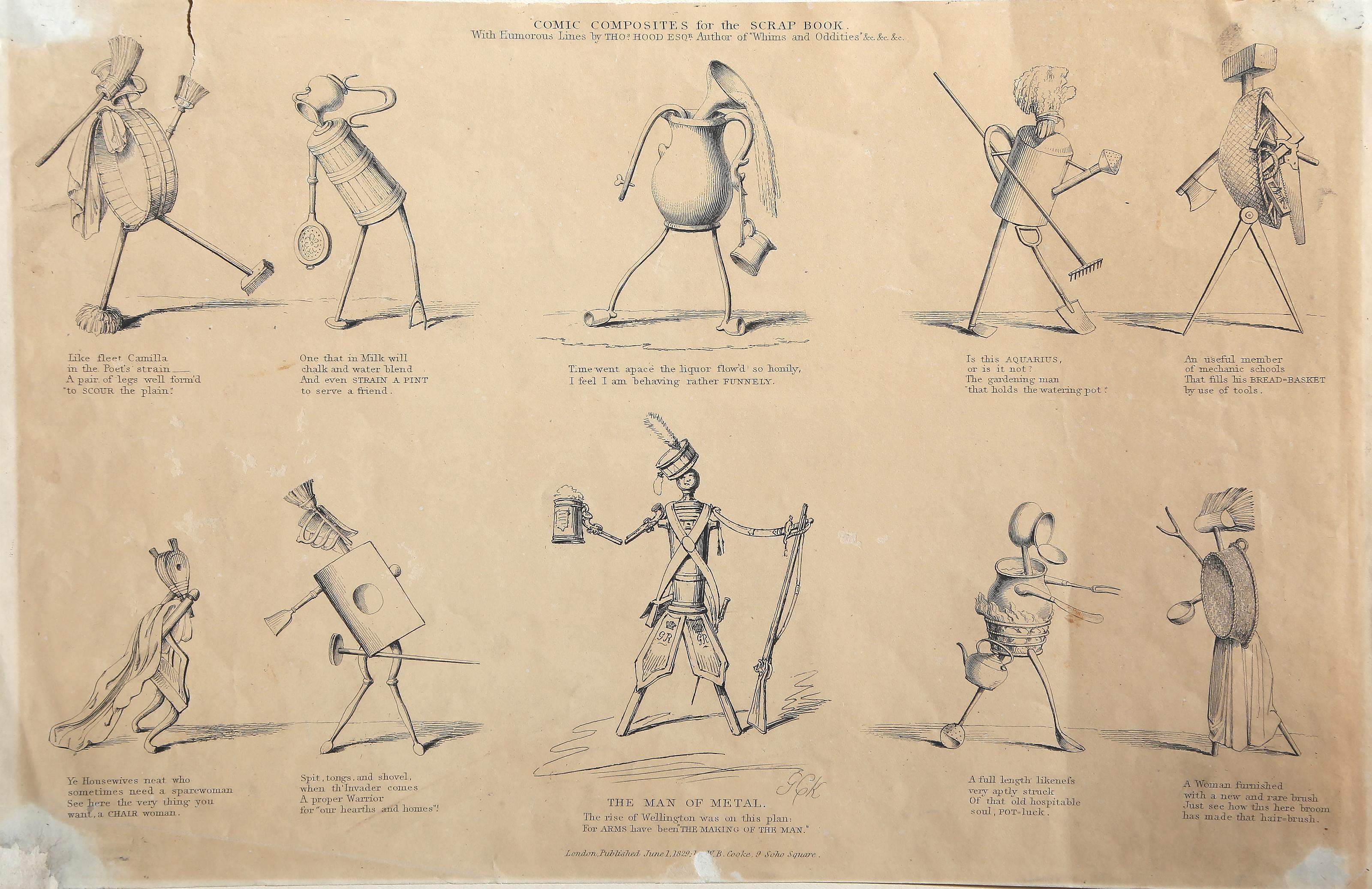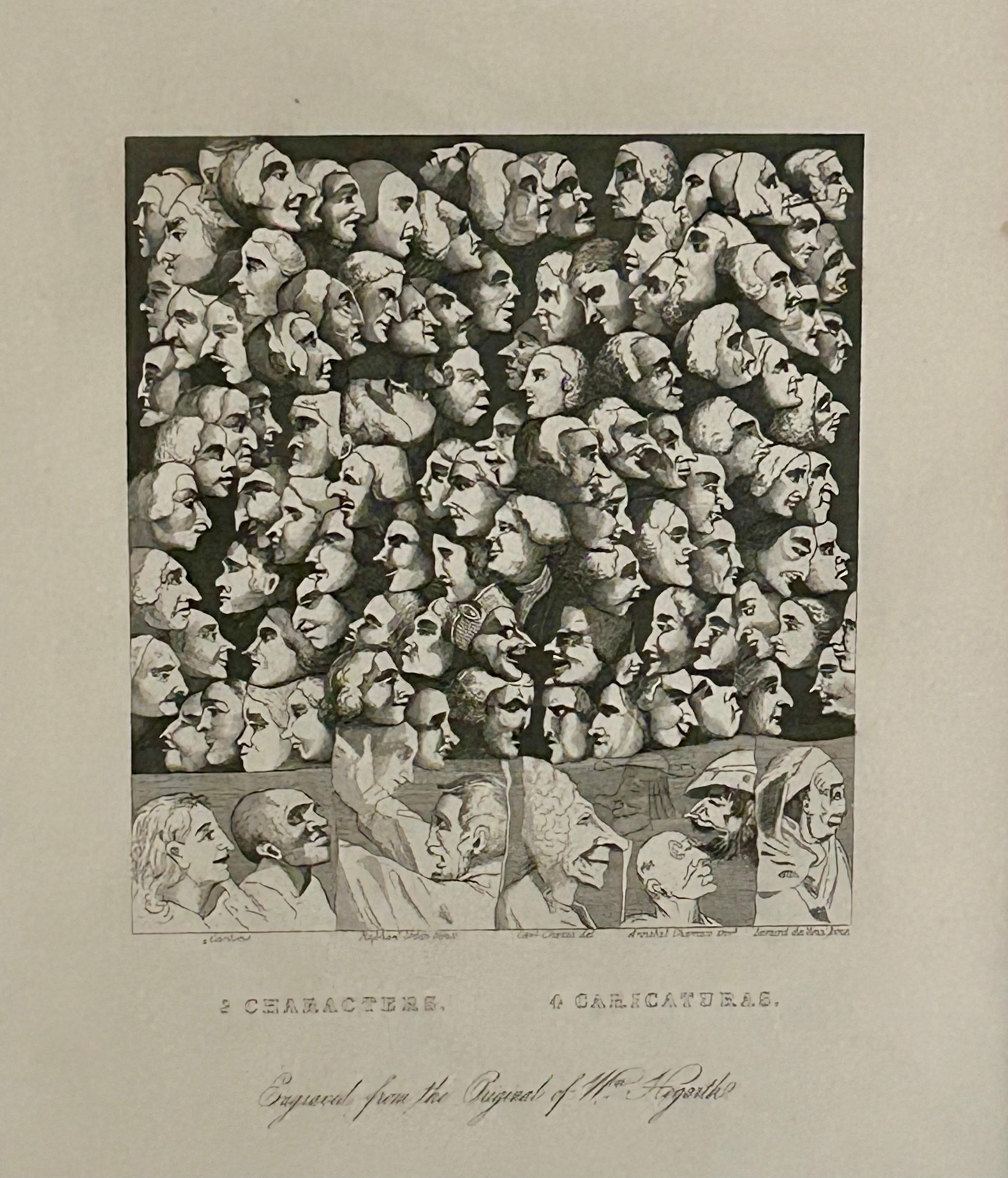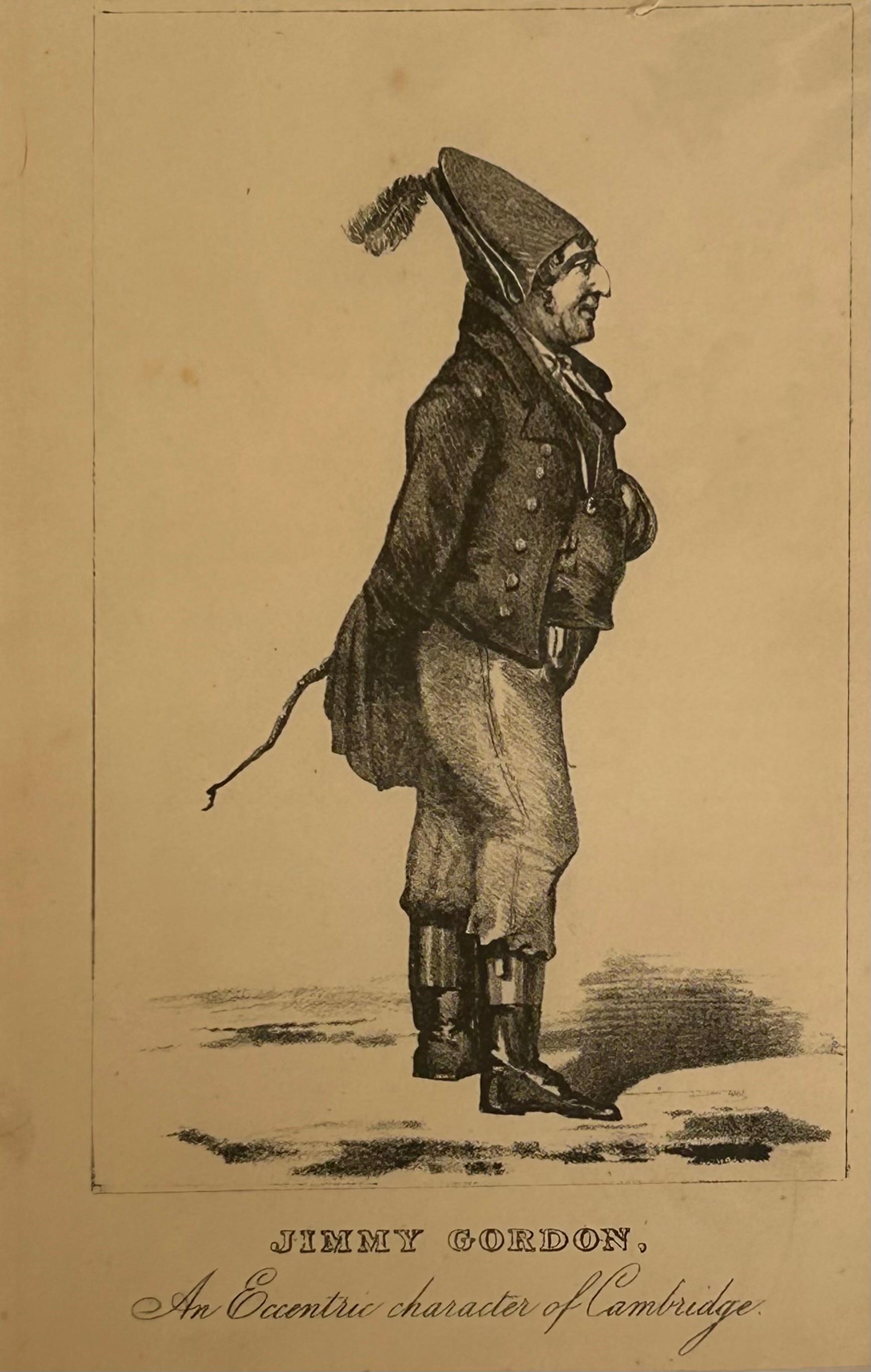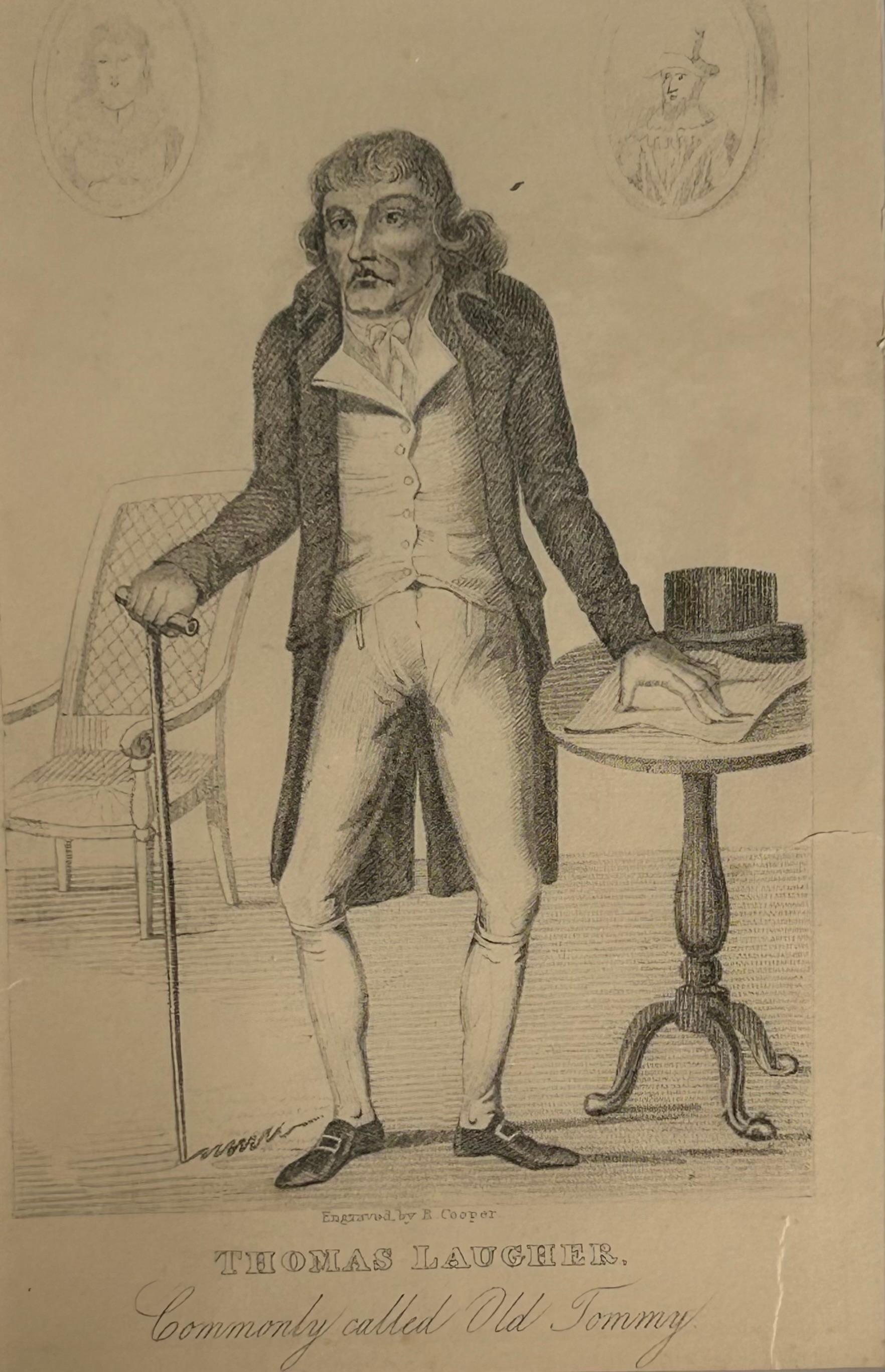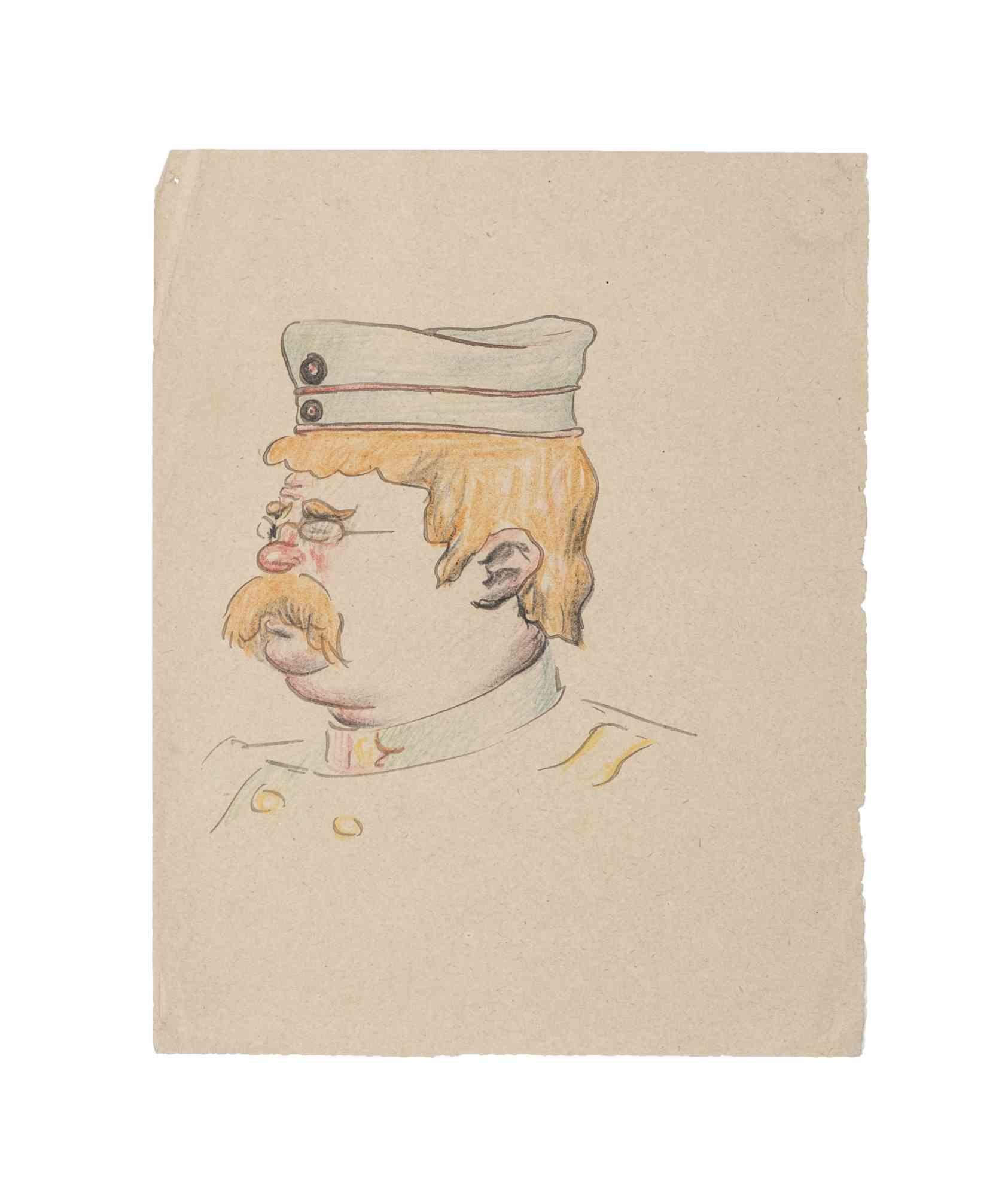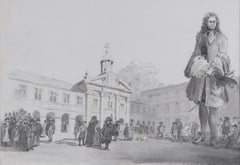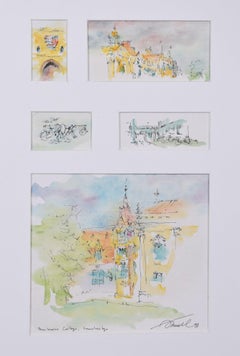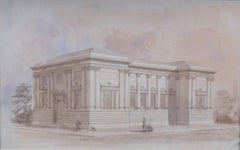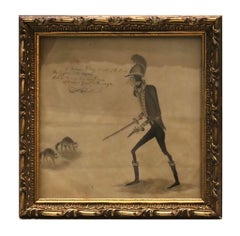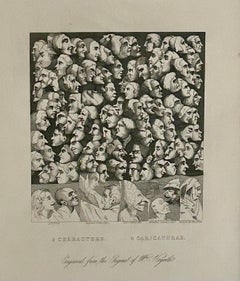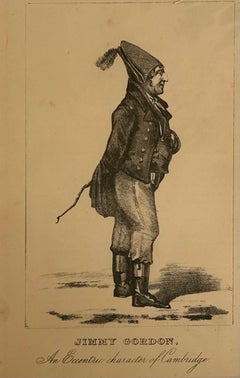Items Similar to Worcester College Provost Richard Lynch Cotton Caricature photographic collage
Want more images or videos?
Request additional images or videos from the seller
1 of 2
UnknownWorcester College Provost Richard Lynch Cotton Caricature photographic collagec. 1850s
c. 1850s
$304.21
£220
€259.25
CA$421.49
A$457.66
CHF 242.37
MX$5,609.62
NOK 2,999.37
SEK 2,834.24
DKK 1,934.96
About the Item
To see our other works of Oxford and Cambridge , particularly suitable for wedding and graduation presents, scroll down to "More from this Seller" and below it click on "See all from this Seller" - or send us a message if you cannot find the view you want.
Provost Richard Lynch Cotton Caricature
A rare specimen of the Cotton-ia Worcester-iensis (not to be found) in the Botanic Gardens Oxford
Pen ink watercolour and photographic collage
19.5 x 16 cm
By repute this item was found in the rooms of John Keble at the Hermitage Hotel in Eastbourne after his death in 1866, together with another watercolour of a ‘Ritualistic Priest’ which we also have for sale.
Cotton was provost of Worcester College Oxford, and in 1852 became also Vice Chancellor; perhaps causing his time to be thinly spread and giving rise to the reference in the caption of this piece to his absence.
- Creation Year:c. 1850s
- Dimensions:Height: 7.68 in (19.5 cm)Width: 6.3 in (16 cm)
- Medium:
- Movement & Style:
- Period:1850-1859
- Condition:
- Gallery Location:London, GB
- Reference Number:1stDibs: LU79537589262
About the Seller
4.8
Vetted Professional Seller
Every seller passes strict standards for authenticity and reliability
Established in 2014
1stDibs seller since 2017
359 sales on 1stDibs
Typical response time: 7 hours
- ShippingRetrieving quote...Shipping from: London, United Kingdom
- Return Policy
Authenticity Guarantee
In the unlikely event there’s an issue with an item’s authenticity, contact us within 1 year for a full refund. DetailsMoney-Back Guarantee
If your item is not as described, is damaged in transit, or does not arrive, contact us within 7 days for a full refund. Details24-Hour Cancellation
You have a 24-hour grace period in which to reconsider your purchase, with no questions asked.Vetted Professional Sellers
Our world-class sellers must adhere to strict standards for service and quality, maintaining the integrity of our listings.Price-Match Guarantee
If you find that a seller listed the same item for a lower price elsewhere, we’ll match it.Trusted Global Delivery
Our best-in-class carrier network provides specialized shipping options worldwide, including custom delivery.More From This Seller
View AllSir Albert Richardson: Christopher Wren Emmanuel College, Cambridge watercolour
By Albert Richardson
Located in London, GB
To see our other views of Oxford and Cambridge, scroll down to "More from this Seller" and below it click on "See all from this seller" - or send us a message if you cannot find the view you want.
Sir Albert Edward Richardson K.C.V.O., F.R.I.B.A, F.S.A., P.R.A. (1880 - 1964)
Cambridge Revisited (1933)
Pen, ink, and wash
24 x 35 cm
Signed and dated lower right.
Renowned for his architectural fantasies, Richardson here depicts Sir Christopher Wren...
Category
1930s Modern Landscape Drawings and Watercolors
Materials
Watercolor
George Pyne, Exeter College, Oxford, Watercolour
By George Pyne
Located in London, GB
To see our other views of Oxford and Cambridge, including others by George Pyne, scroll down to "More from this Seller" and below it click on "See all from this seller" - or send us a message if you cannot find the view you want.
George Pyne (1800-1884)
Exeter College...
Category
19th Century Realist Drawings and Watercolor Paintings
Materials
Watercolor
Pembroke College, Cambridge watercolour vignettes
Located in London, GB
To see our other views of Oxford and Cambridge, scroll down to "More from this Seller" and below it click on "See all from this Seller" - or send us a message if you cannot find the ...
Category
1990s Drawings and Watercolor Paintings
Materials
Watercolor
Original artwork for Illustrated London News of Wolverhampton School of Art
Located in London, GB
Wolverhampton School of Practical Art
Original artwork for engraving published for London Illustrated News (25 June 1853)
17.5x29cm
Watercolour
Category
1850s Victorian Landscape Drawings and Watercolors
Materials
Watercolor
Arabesques and caricatures antiquities engraving
Located in London, GB
To see more, scroll down to "More from this Seller" and below it click on "See all from this Seller."
Arabesques and caricatures
Engraving
24.5 x 36 cm
Category
19th Century Interior Prints
Materials
Engraving
Prof Sir Albert Richardson PRA Architect Caprice Dawn of the Renaissance
By Albert Richardson
Located in London, GB
To see our other architectural drawings and Modern British Art, scroll down to "More from this Seller" and below it click on "See all from this Seller" - or send us a message if you ...
Category
1950s Modern Landscape Drawings and Watercolors
Materials
Watercolor
You May Also Like
Untitled British caricature
Located in New York, US
British caricature drawing, especially flourishing in the 18th and 19th centuries, holds a significant place in art and social commentary. Renowned for its satirical edge, this art f...
Category
19th Century Portrait Drawings and Watercolors
Materials
Paper, Pencil
Comic Composites for the Scrap Book, Surrealist Engraving of Assemblage Figures
Located in Long Island City, NY
Comic Composites for the Scrap Book
Unknown Artist
Date: 1829
Engraving
Image Size: 8 x 13.75 inches
Size: 9.5 x 14.5 in. (24.13 x 36.83 cm)
Publisher: W.B Cooke, London
Category
1820s Surrealist Figurative Prints
Materials
Engraving
3 Characters 4 Caricaturas
By William Hogarth
Located in Bournemouth, Dorset
William Hogarth was an English painter and engraver, the outstanding British artist of his period. During his childhood, his father, a schoolteacher, was imprisoned for debt, and th...
Category
1830s Figurative Prints
Materials
Engraving
$188 Sale Price
20% Off
Jimmy Gordon - An Eccentric Character of Cambridge
Located in Bournemouth, Dorset
James “Jemmy” Gordon, 18th century attorney who became an alcoholic vagabond in and out of gaol. Jimmy Gordon, an eccentric character of Cambridge, 1762-1...
Category
19th Century Figurative Prints
Materials
Engraving
$105 Sale Price
20% Off
Thomas Laugher - Community called Old Tommy
Located in Bournemouth, Dorset
Thomas Laugher, commonly called Old Tommy, 1700-1812. Teetotaller, former liquor merchant of Tower Street, London, famous for his great longevity. Standing with a cane and hat at a d...
Category
19th Century Figurative Prints
Materials
Engraving
$105 Sale Price
20% Off
Caricature - Original Drawing on Paper - Early 20th Century
Located in Roma, IT
Caricature is an original drawing in pencil and pastels realized by an anonymous artist of the early 20th Century
Good condition.
The artwork is depicted through perfect hatching i...
Category
Early 20th Century Modern Figurative Drawings and Watercolors
Materials
Pencil
More Ways To Browse
Artist Signatures
Signed Plate
Antique Lithograph Prints
Vintage Attends
Slim Aarons Prints
Framed Acrylic Painting
French Oil Paintings With Frame
Oil Paintings New York City
Used Plexiglass
Antique Original Prints
Black And White Framed Photographs
Artist Proof
Used Tvs
Woman Art
Antique Print Etching
Surrealist Vintage
Abstract Black And White Paintings
Vintage Gelatin Prints
